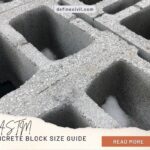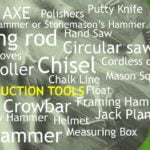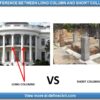Bitumen Extraction test, also referred to as binder content test, is used to determine the amount of bitumen that is actually used as binding content in asphaltic pavement or asphaltic concrete recently laid at site. The durability, compatibility and resistance from defects like rutting, bleeding, raveling and ageing of flexible asphaltic roads is highly dependent on the bitumen content used for the coating of the filler aggregates used in the asphaltic matrix.
So this test is parallel to that of the cylindrical compression test of the actual concrete samples obtained at site before placement of concrete to determine its actual compressive strength to be as per the required mix design.
The mix design of asphalt is carried out by series of hit and trial in job mix formula for determination of the optimum binder content. So at site, before final payment to the contractor it must be ensured that the amount of bitumen required by the mix design is actually used at site or not.
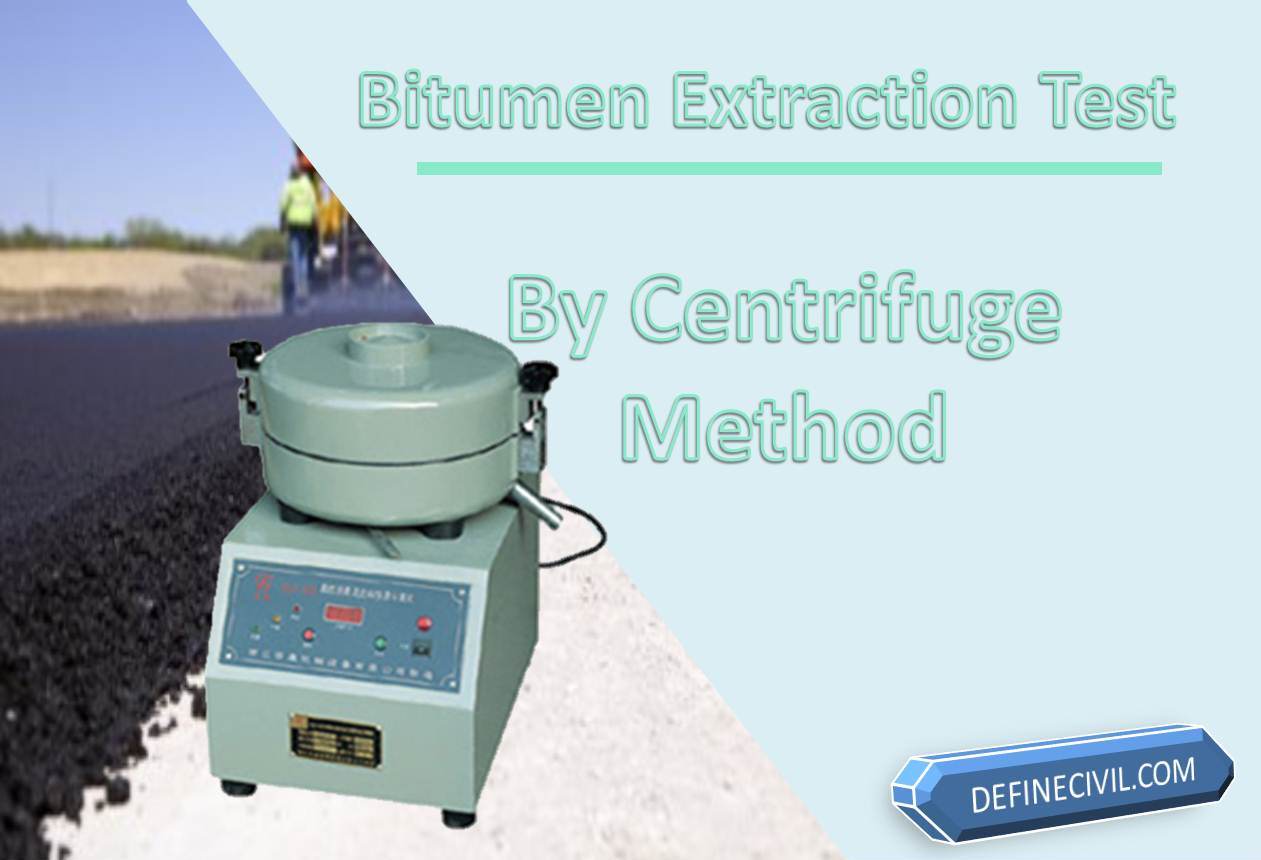
Apparatus for the Bitumen Extraction Test
The test is performed with a specialized bitumen extraction apparatus. Other items we requires in the this test as apparatus are:
- Oven a well maintained oven is needed cable of maintaining the temperature at 110 degrees.
- A flat pan for carrying the test specimens.
- Balance or scales capable of weighing the sample to an accuracy of 0.05 % of its mass.
- Extraction apparatus, consisting of a bowl and an apparatus in which the bowl may be revolved at controlled variable speeds up to 3600 revolutions per minute.
- Filter ring or filter paper to fit in the trim of the bowl.
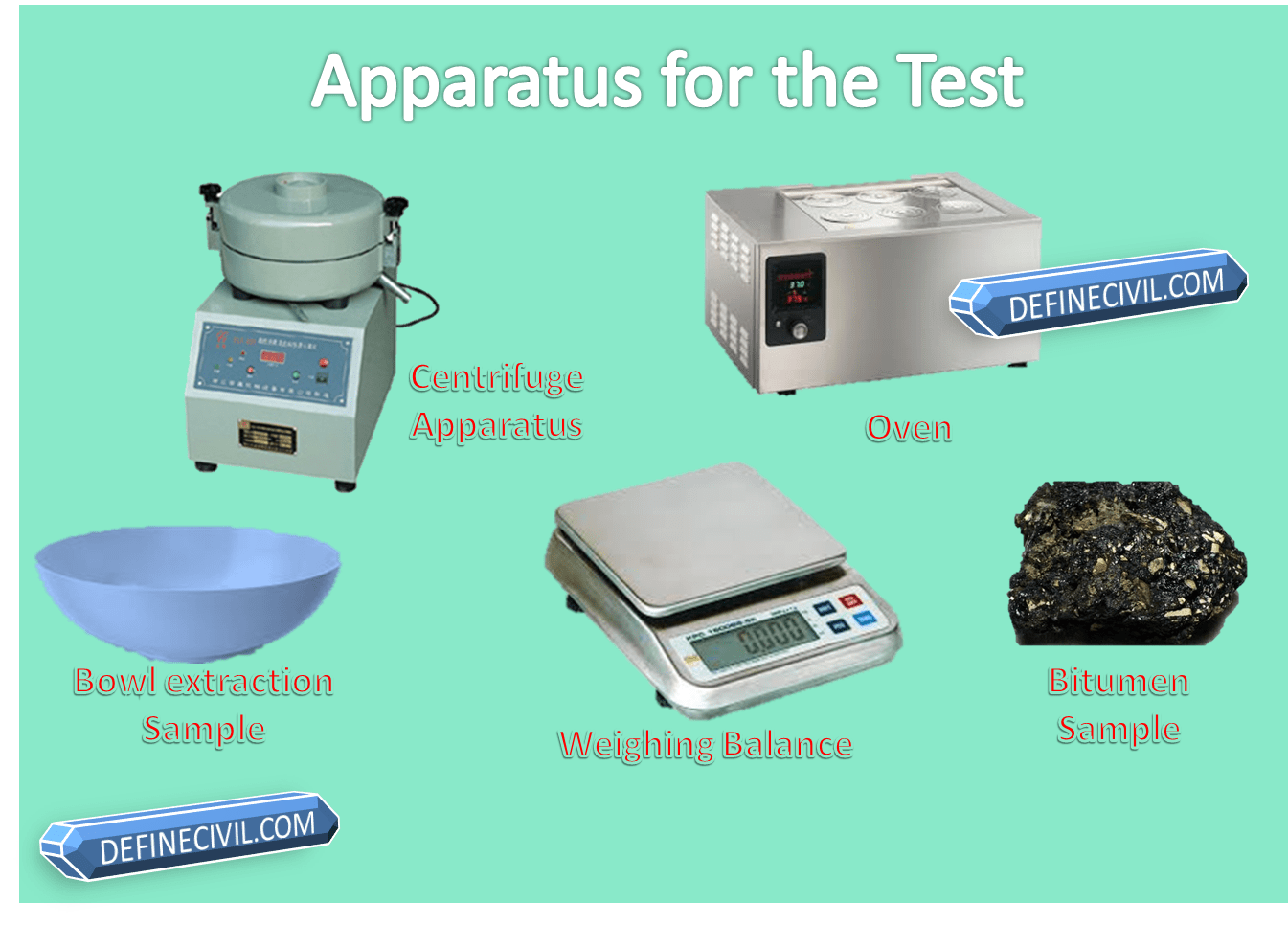
Generally there are two method used for the bitumen extraction test:
- Centrifuge Method
- Extraction Bottle Method
In most parts of the world the first method i.e. Centrifuge Method is usually used so for today’s post I would also be dealing only the Centrifuge method for Bitumen Extraction Test and is standardized by American Society for Testing Materials ASTM 2172. This method actually uses the generic process of cold solvent extraction method.
The background of this test is that a solvent is used to immerse the sample and then by centrifuging all the bitumen is extracted / removed isolating the mineral aggregates. The weight of those aggregates is subtracted from the total weight of the sample to get the weight of the bitumen in the sample expressed as percentage binder content.
Standard of the Test
The test is performed as per the ASTM D2172 standard but in that standard it is referred to as cold dissolver method. In the IS code we have to follow IRC: SP 11-1988 (Appendix-5) and also see IS 13826-7 (1993).
Bitumen Extraction Test by Centrifuge Method
- Sample Preparation
The sample can either be taken from the asphalt plant or from the dump truck at site depending on the site situation. As the results obtained from the test sample may be affected by the age of the material; thus for best results the test must be carried out on mixtures and pavement shortly after their preparation.
If the sample is not soft enough so as to get separated by a spatula, it must be placed on a flat pan and then warmed at a temperature of 1100C plus or minus 5 0C in the oven till it can be handled or separated.
From that a representative sample is taken of the size in accordance with the nominal maximum size of the aggregates in the mix. If the sample has aggregates of 4.75 mm than 0.5 kg of sample is sufficient but if it had aggregates of 37.5 mm or so a 4 kg sample must be taken. As a guide you can follow this table.
[Table here]
- The sample taken is weighed to the nearest of 0.05% of its mass and is recorded as W1 and is then placed in the bowl for the extraction machine.
- The sample is then immersed or covered with the solvent that can be petrol of about 5 liters or it is better to add commercial grade tricholoroethylene or Benzene and let the mixture stand for about an hour. The purpose of solvent is to disintegrate the test portion.
- An oven dried filter ring is taken and its initial weight is recorded. The temperature of oven for drying the ring is kept at 110 plus minus 50 The edge of the bowl is covered with this filter ring.
- The bowl is then covered with a steel cover and is clamped tightly before placing in the apparatus. A beaker or a clean container is placed underneath the drain outlet of the centrifuge apparatus for collection of the extract (mixture of solvent and bitumen).
- Centrifuge the Sample
- The next step is to centrifuge the apparatus, the bowl is placed in the apparatus and the machine is started to revolve. The speed is gradually increased till a maximum speed of 3600 rev/min is attained.
- The machine is allowed to revolve till solvent ceases to flow from the drain outlet.
- Allow the machine to stop and additional solvent is added in quantity of 200 ml or more depending on the amount of the sample.
- The solvent is added again and again with minimum of 3 cycles till the color of extract coming out from the drain outlet is clear and not darker than a light straw color.
- The filter paper is carefully removed from the bowl or container along with the residual aggregate in a metal pan; which is afterwards dried in air and in the oven at a constant temperature around 1100
- The fine fragments of mineral aggregates that are attached with the filter are carefully scratched and then the weight of the filter and aggregate are noted.
Bitumen Content test Calculations & Report
The bitumen content obtained as a result of the bitumen extraction test is calculated and reported as follows:-
Bitumen content (grams) =( W1-(W2+W3))/W1
Where,
W1 = weight of the sample test portion in grams
W2 = Weight of the extracted mineral aggregate in grams.
W3 = weight of the fine aggregate fragments in grams
Result :
The bitumen content may be expressed as a percentage of weight of bitumen with respect total weight of the mix or with respect to total aggregate in the mix.
Bitumen content % by weight of total mix = (bitumen content in grams / W1) x 100
[su_box title=”Interesting for You”]The residue of aggregate and filler may be used in the gradation of the sample. [/su_box]
Precautions
This test may involve hazardous materials, operation and equipment. Safety precautions must be exercised at all times. The inhalation of solvent fumes may be particularly harmful and therefore it is advised that the area where the extraction test is carried out is well ventilated and that an adequate extractor fan is provided.
Balances should be calibrated using reference weight once every twelve month.
Do you need a bitumen extraction test result report? Don’t worry! I’ve made a complete excel file for you to download and start using it for your own project.
Here is a report for the test.
[su_document url=”https://definecivil.com/wp-content/uploads/2018/10/bitumen-extraction-test.xlsx” width=”440″ height=”440″]
Are you getting board from reading? So don’t worry I have made this exciting explainer video for your like dudes.
[su_youtube url=”https://www.youtube.com/watch?v=eYYp9uNR-ts” width=”460″]


